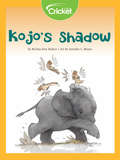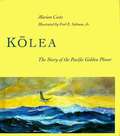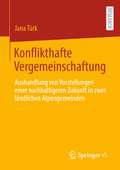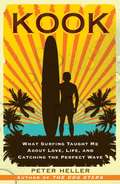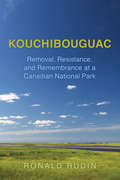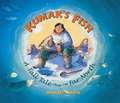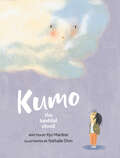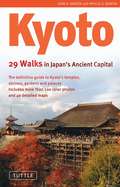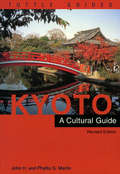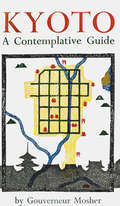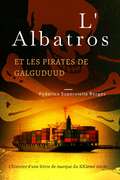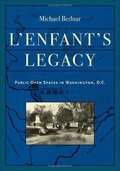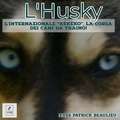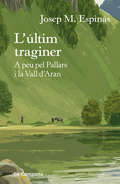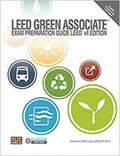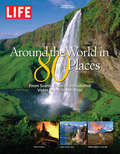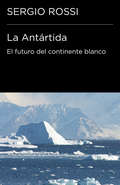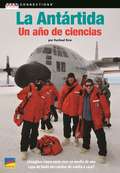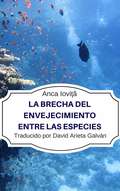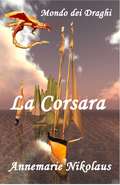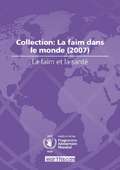- Table View
- List View
Kojo's Shadow
by Na'Ima Bint RobertKojo is a young elephant. When he sees his shadow for the first time, he’s alarmed.
Kolea: The Story of the Pacific Golden Plover (Kōlea)
by Marion Coste Fred SalmonDescribes the physical characteristics, migration, and life cycle of the Kolea or Pacific golden plover, which spends part of its year on the tundra of western Alaska and the remaining months in Hawaii.
Komodo Dragons (Nature's Children)
by Geoff MillerCan Komodo dragons breathe fire? How many teeth do Komodo dragons have? What do young Komodo dragons look like? Find the answers to these questions, and learn much more about the physical characteristics, behavior, habitat, and lives of Komodo dragons. Other books in this series are available in this library.
Kompakter Leitfaden für Energiemanager: Energiemanagementsysteme nach DIN EN ISO 50001:2018 (essentials)
by Marko GeilhausenEnergiemanager und Energiemanagementbeauftragte finden die wesentlichen Aspekte und Anforderungen kompakt und übersichtlich dargestellt. Tabellen geben Beispiele und veranschaulichen die dargestellten Zusammenhänge, gemeinsam mit dem Sachwortverzeichnis bietet sich dieses Buch so zum Überblick und schnellen Nachschlagen für den Praktiker an. Die Änderungen zur Vorgängernorm ISO 50001:2011 sind ebenfalls benannt.
Konflikthafte Vergemeinschaftung: Aushandlung von Vorstellungen einer nachhaltigeren Zukunft in zwei ländlichen Alpengemeinden
by Jana TürkJana Türk untersucht in ihrer qualitativen Studie, wie Akteure in zwei ländlichen Alpengemeinden nachhaltige Entwicklung aushandeln. Dabei nimmt sie unterschiedliche lokale Entwicklungsprozesse in den Blick und rekonstruiert anhand von leitfadengestützten Interviews, ethnographischen Beobachtungen und weiteren Dokumenten kollaborative und konflikthafte Aushandlungsprozesse und welche Rolle Gemeinwohl im Umgang mit den lokal wirksamen Dynamiken sozial-ökologischen Wandels spielt.
Kook: What Surfing Taught Me About Love, Life, and Catching the Perfect Wave
by Peter HellerAuthor of the New York Times bestselling novel The Dog Stars With grit, poetry, and humor, Peter Heller, acclaimed author of The Whale Warriors recounts his remarkable journey of discovery--of surfing, an entirely new challenge; of the ocean's beauty and power; of the strange surf subculture; of love; and, most of all, of how to seek adventure while crafting a meaningful life. Having resolved to master a big-hollow wave-- that is, to go from kook (surfese for beginner) to shredder--in a single year, Heller travels from Southern California down the coast of Mexico in the company of his girlfriend and the eccentric surfers they meet. Exuberant and fearless, Heller explores the technique and science of surfing the secrets of its culture, and the environmental ravages to the stunning coastline he visits. As Heller plumbs the working of his own heart and finds joy in both love and surfing, he affords readers vivid insight into this fascinating world, with all of its perils and pleasures, its absurdity and wonder. Exhilarating, entertaining, and moving, Kook is a love story between a man and his surfboard, a man and his girlfriend, a not-so-old man and the sea.
Kouchibouguac: Removal, Resistance, and Remembrance at a Canadian National Park
by Ronald RudinIn 1969, the federal and New Brunswick governments created Kouchibouguac National Park on the province's east coast. The park's creation required the relocation of more than 1200 people who lived within its boundaries. Government officials claimed the mass eviction was necessary both to allow visitors to view "nature" without the intrusion of a human presence and to improve the lives of the former inhabitants. But unprecedented resistance by the mostly Acadian residents, many of whom described their expulsion from the park as a "second deportation," led Parks Canada to end its practice of forcible removal. One resister, Jackie Vautour, remains a squatter on his land to this day.In Kouchibouguac, Ronald Rudin draws on extensive archival research, interviews with more than thirty of the displaced families, and a wide range of Acadian cultural creations to tell the story of the park's establishment, the resistance of its residents, and the memory of that experience.
Kumak's Fish: A Tall Tale from the Far North
by Michael BaniaOne Arctic morning, Kumak looked out the window and saw the sun rising over the frozen river. "Ahhh, spring," said Kumak. "The days are long. The nights are short and the ice is still hard. Good day for fish." Eager to try out Uncle Aglu's amazing hooking stick, Kumak goes out ice fishing with his family. Kumak waits patiently and finally, his line twitches. He pulls but can't land the fish. Everyone in the village joins in to help, but Kumak is sucked into the hole. They pull again, and out Kumak flies with a string of fish, each holding onto the fish in front of it. With a catch big enough to feed the whole village, they head home exclaiming, "Good day for fish." The playful art, text, and notes on fishing methods provide children with a window into Inupiat culture in this follow-up to Kumak's House."
Kumo: The Bashful Cloud
by Kyo MaclearThe uplifting journey of a bashful cloud ("kumo" in Japanese) who discovers the rewards of feeling seen.Kumo is a cloud whose only wish is to float unseen. When she&’s assigned cloud duty for the day, she feels overwhelmed by self-doubt and her fear of being noticed. But after learning that closing your eyes isn&’t a good solution to your troubles, Kumo pulls her fluff together and does her duties — drifting, releasing rain and providing shelter — meeting some new friends along the way and inspiring the imagination (and capturing the heart) of a small daydreamer like her. Kyo Maclear&’s sweetly humorous and lyrical parable about shyness, vividly brought to life by Nathalie Dion&’s ethereal illustrations, is an affirmation of the pleasures of community and the confidence that can arise from friendship and visibility.
Kyoto
by John H. Martin Phyllis G. MartinKyoto is Japan's ancient capital and modern-day center of tourism and traditional culture. Founded nearly 1,300 years ago and undamaged by the war, Kyoto today is one of the world's most beautiful and historic cities, home to 17 World Heritage sites and over 2,000 temples and shrines.Kyoto presents 29 easy-to-follow walking tours through the city's 1,300 years of history, its many unique districts and scenic areas full of charm and character. This updated, greatly expanded guide features over 100 color photos, as well as approximately 40 brand new, full-color guide maps and diagrams of individual sites.
Kyoto a Cultural Guide
by John H. Martin Phyllis G. MartinA guidebook to 14 walking tours, Kyoto: A Cultural Guide is also a kaleidoscopic reference and resource book certain to please long-term residents and first-time travelers
Kyoto a Cultural Guide
by John H. Martin Phyllis G. MartinA guidebook to 14 walking tours, Kyoto: A Cultural Guide is also a kaleidoscopic reference and resource book certain to please long-term residents and first-time travelers
Kyoto: A Contemplative Guide
by Gouverneur MosherThis Kyoto travel guide presents the best tourists sites in Japan's spiritual and historical capital.With this guide the visitor needs no further assistance to learn all that a place has to offer. It is factual, concise, and complete. This Japan travel book is generously illustrated with photographs, maps, route plans, and building plans, as well as a selection of reproductions from old prints and picture scrolls.The sights were specifically chosen to give foreign visitors a broad understanding of Kyoto's political, religious, and cultural history. Among them are the ancient Phoenix Hall of the Byodo-in, the famous rock garden at Ryoan-ji, the mountain temples of Enryaku-ji, the lavishly decorated Nijo Castle of the Tokugawas, the Silver Pavilion and its remarkable garden, and the "all-time temple," Kiyomizu.Three appendices--a chart of Japanese art periods, a glossary and a list of useful Japanese phrases--further enhance its value.
L'Albatros et les pirates de Galguduud: L'histoire d'une lettre de marque du XXIème siècle
by Federico Supervielle BergésLes camps de pirates qui parsèment la côte somalienne menacent de détourner tout bateau qui s'approche d'eux, mais les pays développés ne semblent pas capables de faire face à ce problème. L'industrie mondiale de l'énergie est sur le point de s'effondrer : un homme d'affaires sera-t-il capable de faire face aux pirates ? l'État somalien en faillite sera-t-il capable de contrôler ses propres côtes ? Un jeune marin de Cadix, fuyant ses problèmes personnels, est choisi pour en finir avec les ennemis du magnat, mais même l'océan Indien n'est pas assez loin de son passé. Au fur et à mesure que les événements se déroulent, il pressent un complot plus complexe derrière les attaques. Sans s'en rendre compte, Pablo est entraîné au centre d'une conspiration internationale dans laquelle il ne peut compter que sur l'aide de so,n équipage et de son navire : l'Albatros.
L'Enfant's Legacy: Public Open Spaces in Washington, D.C
by Michael Bednar(front flap) Many American democratic ideals are embodied in the public spaces of its cities, especially in Washington, D.C. In L'Enfant's Legacy architect and scholar Michael Bednar explores the public spaces of the nation's capital, examining the context of the surrounding architecture and the roles of the spaces in the changing functional life of the city. Bednar examines the ways in which L'Enfant's innovative plan of 1791, along with later developments, symbolizes and encourages democratic freedoms and traditions. In the spaces of Capitol Square, citizens expect to encounter their government directly in a dignified setting, a symbolic public forum. On the White House grounds they expect to meet the president where he works and lives. At the National Mall - America's front lawn - citizens exercise their rights of assembly and free speech, as well as play football, eat lunch, and socialize.
L'Husky: L’Internazionale “Kékéko”, la corsa dei cani da traino!
by Yves Patrick BeaulieuLa capitale dell’Abitibi, Rouyn-Noranda, quest’inverno accoglie l’internazionale kékéko, la famigerata corsa dei cani da traino. Quel giorno, Rodolfo Galarneau, un novizio in questo universo, non ha dubbi che salirà sul podio…La capitale dell’Abitibi, Rouyn-Noranda, quest’inverno accoglie l’internazionale kékéko, la famigerata corsa dei cani da traino. Quel giorno, Rodolfo Galarneau, un novizio in questo universo, non ha dubbi che salirà sul podio…
L'últim traginer: A peu pel Pallars i la Vall d'Aran
by Josep Maria EspinàsEspinàs converteix l'experiència de la caminada en una crònica viva en la qual el lector s'aventura amb l'escriptor per camins desconeguts del Pallars i la Vall d'Aran. L'últim traginer ens transporta a un temps en què el Pallars i la Vall Aran no tenien estacions d'esquí, els guàrdies civils anaven amb bicicleta i la centraleta de telèfons de Salardú la feia funcionar, manualment, una noia en un racó de menjador d'una antiga fonda. El lector s'aventura amb l'escriptor pels camins i les valls d'aquestes contrades, en una crònica que reviu un món rural perdut i nostàlgic de mitjan anys cinquanta. Josep M. Espinàs, a través d'aquesta crònica del 1956, reviu uns fets, uns personatges i un paisatge que avui ja formen part del passat, però que l'autor manté vius per sempre amb el seu testimoni de narració viva.
L.I. Mandelstam and His School in Physics
by Alexander PechenkinThis biography of the famous Soviet physicist Leonid Isaakovich Mandelstam (1889–1944), who became a Professor at Moscow State University in 1925 and an Academician (the highest scientific title in the USSR) in 1929, describes his contributions to both physics and technology. It also discusses the scientific community that formed around him, commonly known as the Mandelstam School. By doing so, it places Mandelstam’s life story in its cultural context: the context of German University (until 1914), the First World War, the Civil War, and the development of the Socialist Revolution (until 1925) and the young socialist country. The book considers various general issues, such as the impact of German scientific culture on Russian science; the problems and fates of Russian intellectuals during the revolutionary and post-revolutionary years; the formation of the Soviet Academy of Science, the State Academy; and the transformation of the system of higher education in the USSR during the 1920s and 1930s. Further, it reconstructs Mandelstam’s philosophy of science and his approach to the social and ethical function of science and science education based on his fundamental writings and lecture notes. This reconstruction is enhanced by extensive use of previously unpublished archive material as well as the transcripts of personal interviews conducted by the author. The book also discusses the biographies of Mandelstam’s friends and collaborators: German mathematician and philosopher Richard von Mises, Soviet Communist Party official and philosopher B.M.Hessen, Russian specialist in radio engineering N.D.Papalexy, the specialists in non-linear dynamics A.A.Andronov, S.E. Chaikin, A.A.Vitt and the plasma physicist M.A.Leontovich. This second, extended edition reconstructs the social and economic backgrounds of Mandelstam and his colleagues, describing their positions at the universities and the institutes belonging to the Academy of Science. Additionally, Mandelstam’s philosophy of science is investigated in connection with the ideological attacks that occurred after Mandelstam’s death, particularly the great mathematician A.D.Alexandrov’s criticism of Mandelstam’s operationalism.
LEED Green Associate Exam Preparation Guide (v4 Edition)
by Heather C. McCombs<p>The LEED Green Associate Exam Preparation Guide, LEED v4 Edition is designed to help you pass the LEED Green Associate exam. The exam prep guide captures the critical points you need to know about green building. It also reflects the structure of the exam knowledge and task domains to organize foundational concepts in green building and LEED. <p>The exam prep guide will help you prepare for the exam by emphasizing key terms and providing application learning through practice questions. This resource is intended to be used in conjunction with the exam primary references, including the LEED Core Concepts Guide. Access to a variety of digital resources that enhance learning is also included with this guide.</p>
LIFE Around the World in 80 Places: From Scenic Cities to Sensational Vistas to the Seven Seas
by The Editors of LIFESee the world from an exciting new perspective with this inspiring visual guide of some of the world’s most beautiful and captivating places! Visit 80 of the most beautiful and thought-provoking wonders, all carefully curated to simulate eight round-the-world journeys. Dozens of stunning photos guide readers from cities and museums to mountains and lakes, to attractions and oddities and more. You’ll see many of the places you would expect, including dynamic cities and famous natural wonders. But there are some best-kept secrets here, too, including the Hill of Crosses in Lithuania and Dean’s Blue Hole in the Bahamas. The last section is dedicated to the attractions that are on everyone’s bucket list—the Great Wall of China, the Taj Mahal, Petra. The spirit of Jules Verne lives on in this unique collection that’s perfect for armchair travelers.
La Antártida. El futuro del continente blanco
by Sergio RossiEl biólogo Sergio Rossi, uno de los pocos privilegiados que ha pisado la mítica tierra de la Antártida, nos acompaña a bordo del buque alemán Polarstern hasta el "fin del mundo", la zona de Larsen, un lugar que los ojos del hombre no han visto jamás. Nos muestra la fauna y flora que habitan la superficie helada y los fondos marinos del continente blanco, y nos explica la importancia crucial de mantener su equilibrio para poder preservar también el equilibrio del planeta.
La Brecha del Envejecimiento Entre las Especies
by Anca IoviţăEl envejecimiento es un rompecabezas a resolver. Este proceso es tradicionalmente estudiado en algunos modelos biológicos como moscas de fruta, gusanos y ratones. Lo que todas estas especies tienen en común es su rápido envejecimiento. Esto es excelente para el presupuesto del laboratorio. Es una gran estrategia a corto plazo. ¿Quién tiene tiempo de estudiar especies que viven por décadas? Pero las diferencias de duración de vida entre las especies son magnitudes de orden mayor que cualquier variación lograda en el laboratorio. Esta es la razón por la cual estudié incontables fuentes de información en un intento por reunir información altamente especializada en un libro fácil de seguir. Quería ver el bosque entre los árboles. Quería exponer la brecha del envejecimiento entre las especies en una secuencia lógica y fácil de seguir. Este libro es mi intento de hacer precisamente eso. ¿Cuáles son los mecanismos subyacentes de la brecha de envejecimiento entre las especies? He elegido intencionalmente escribir la respuesta a esta cuestión en un lenguaje claro. La investigación del envejecimiento es muy importante como para enconderla tras las puertas cerradas del argot científica formal. Este libro podría no haber exisitdo si el té verde, las bibliotecas y el internet no hubieran sido inventados. La cantidad de datos que tuve que explorar para mantener los patrones esenciales es enorme. Sin embargo, el libro no es exhaustivo. No es un aburrido y académico libro de texto. Intenté infundir vida en un tema que es enormemente importante para la extensión de la esperanza de vida humana. Solo tú puedes decidir si lo logré. ***************** Tabla de Contenidos ********************** Encontrando el Bosque Entre los Árboles Ser Confiable Cuenta Las Matemáticas del Envejecimiento La Velocidad de la Senescencia Caso de Estudio: Envejecimiento en Peces Cómo Estimar
La Corsara: Un romanzo fantasy su navigatori, draghi ed elfi (Mondo dei Draghi #1)
by Annemarie NikolausMondo dei Draghi: Nanja, la corsara delle Isole Galleggianti, ruba una dozzina di cavalli dal continente più vicino. Un nobile dell'Isola dei Draghi vuole farli schierare contro i draghi autoctoni e consolidare il suo potere con lo spettacolo. Ma prima una bonaccia, poi un terremoto e infine un attacco dei demoni minacciano di rovinare l'affare di Nanja con il nobile. Sembra che i cavalli non debbano raggiungere l'Isola dei Draghi. Quindi, il committente di Nanja diventa il suo stesso nemico, perché ha bisogno dell'unico navigatore in grado di gestire i cavalli. Si impossessa di Ron e prende Nanja in ostaggio, affinché Ron vinca la corsa per lui. Ma quando Ron sarà nuovamente libero, non sarà affatto al sicuro... Ogni romanzo della collana è autoconclusivo.
La Faim et la Sante: Collection: La Faim dans le Monde (2007)
by World Food ProgrammeFirst published in 2008, La Faim et la Sant is a valuable contribution to the field of Environment and Sustainability.
